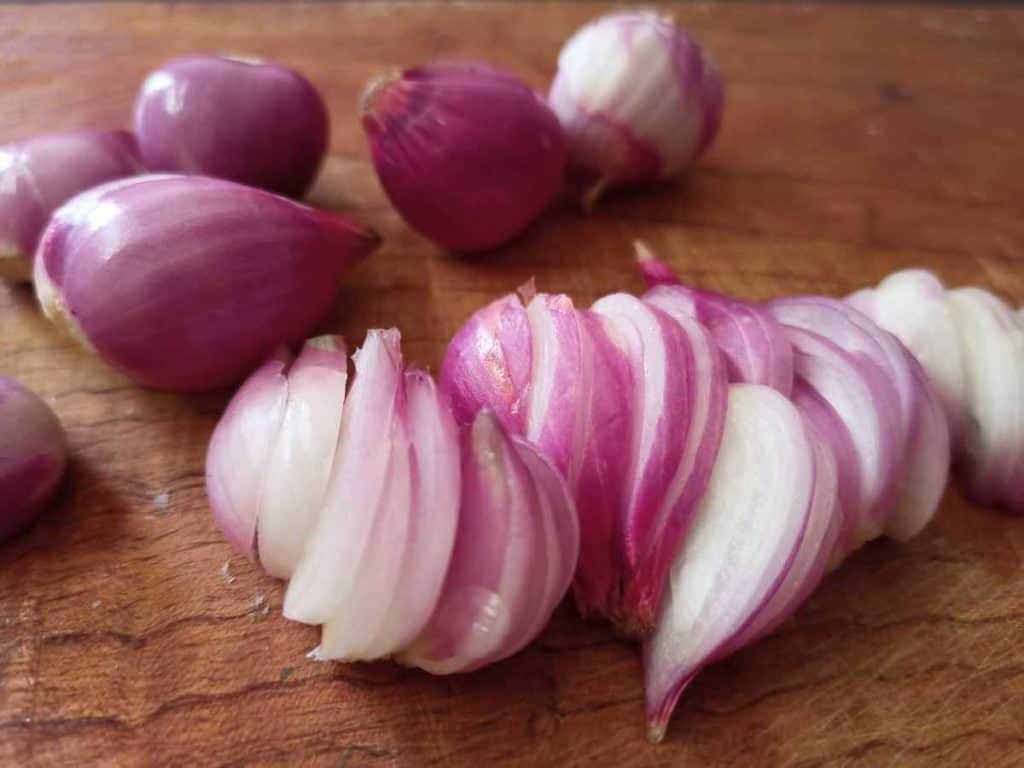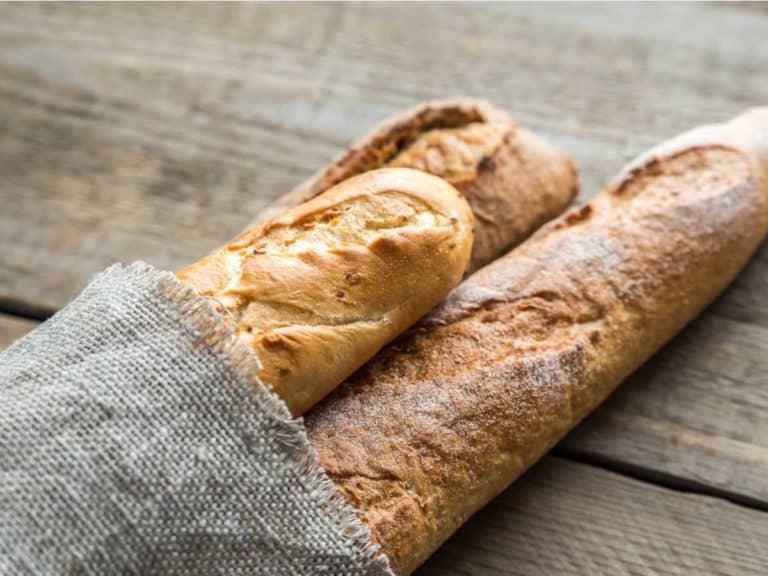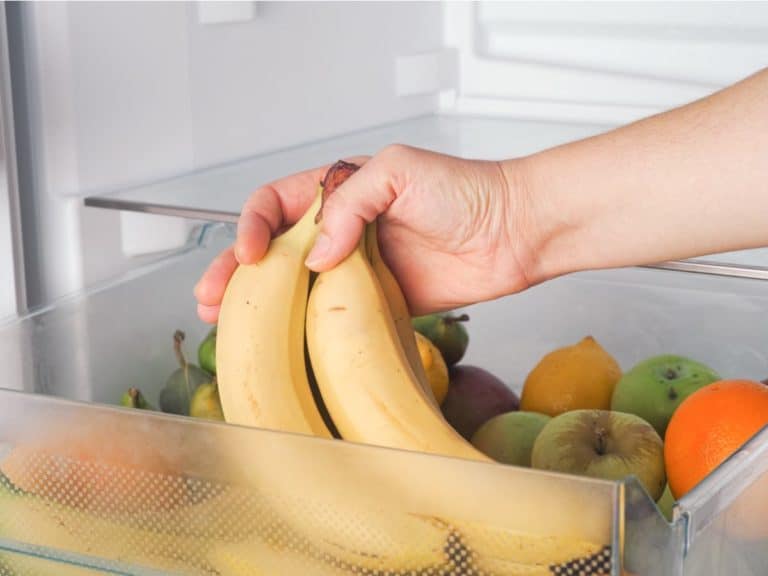How To Freeze, Defrost, and Store Shallots
Shallots are amazing vegetables that can be purchased from major supermarkets or even grown in your backyard. They are commonly used in salad dressing and sauces. It adds a lot of nutritional value and flavor to dull meals. Because of their high demand at home, you tend to buy in excess so that you keep them handy whenever you need them at home. To store them for long-time use, you can freeze them, here is the proper way on how to freeze shallots:
As a general rule, shallots are best frozen when they are chopped into tiny pieces, washed, and stored in freezer-safe bags or containers. You can also freeze whole shallots; however, this results in freezer burn and takes up more space in the freezer. Moreover, it takes away some of its nutritional value.
If stored in the fridge, shallots can last around 10 days. But if frozen, they can generally last up to 10 years. When freezing shallots, here are some tools and equipment you might need.
Tools And Equipment For Freezing Shallots

Whether it is fresh fruits or already prepared meals, these tools can make the entire storing process easier. The food will last longer and taste even better.
Containers
I usually opt for glass containers because they are better for the environment. Compared to plastics, they are much higher in quality and do not stain like plastics. Nonetheless, they are a great investment. Just make sure you buy your containers in a range of sizes because you can use them in freezing and storing a range of different goods.
Ziplock bags
Freezer bags are a mainstay if you love freezing foods to make them last stronger. Invest in quality freezer bags and they help you keep out air; thus, keeping the food fresh longer.
Most of the high-quality ziplock bags come with a small area to allow you to write some information about the food (for example: what it is, when it was frozen, and even the defrosting instructions) on the bag.
Ice cube trays
Ice cube trays can help you freeze not just water. Instead, you can use them for freezing small portions of foods such as egg whites, tomato sauce, pesto, and many more.
To store food in an ice cube tray, simply add the food to the tray then freeze. Once frozen, pop the food out, then put it into the ziplock bag. You can simply take one or two portions of the food out, then defrost as needed.
How To Freeze Whole Shallots?
Freezing shallots is very easy and can take only around 5 minutes. It may take longer if you have a full bag to freeze.
To freeze your shallots, simply remove the skin from the shallots. Rinse the shallots under the running water then dry. Once dry, you may chop the shallots into smaller pieces. It is recommended to aim for around 1-inch squared, you can do this by using a knife.
Cutting the shallots, instead of freezing them the whole minimizes the risk of freezer burn (contains more nutritional value) as well as reducing the amount of space the shallots will take over in the freezer.
After chopping the shallots, pack them in the freezer-safe container. You can use either a freezer bag or a freezer-safe container. Using freezer-safe containers can ensure that your shallots will remain in good condition while frozen.
General storage bags without freezer-safe protection will result in freezer burn that can significantly affect the nutritional value and flavor of the shallots.
How To Defrost Shallots?
After storing shallots in the freezer, there will come a time that you need to use them. Since the shallots are still frozen by now, you need to defrost them before cooking or using them in salads. There are two ways on how to thaw shallots:
The first way is to remove them out of the freezer, some minutes before using them. Allow the icy shallots to sit for some time, then melt off the ice naturally. This is the best way to defrost shallots, though it takes time. The shallots will defrost slowly and naturally without messing up their fresh conditions.
However, if you don’t have the time to defrost the shallots naturally, there is another method that you can use. It is subjecting them to heat with the use of a microwave.
This method is way faster and easier. Although it can mess up the fresh conditions of the shallots, they may end up being mushy because of the microwave heat. Whichever method you decide to use, it will depend on how you want to use the shallots. If they are for cooking, then using the microwave is the best way.
Ways To Store Shallots
Aside from freezing, here are other ways to store shallots:
Hanging basket
Storing huge bulk of those tiny shallots in the hanging basket is one of the best ways to preserve and keep them fresh and safe. Make sure that the hanging basket does not have sizeable holes; otherwise, the shallots will fall and get in the way.
Instead, look for a hanging basket that is made from thick impermeable fabric. A crochet basket made from a rope is an excellent choice, or even a thin basket will do a sling as it can hold the shallots. Hanging baskets are amazing for small vegetables to keep them safe from slithering animals in the kitchen.
String mesh bag
A mesh bag is also another excellent choice to store freshly pickled shallots. Apart from being the most convenient to hold and handle, they are accessible in every market. You will not encounter any trouble finding a mesh bag to keep your shallots.
A mesh bag made from metal or thick wire is good enough to keep the shallots together in a bunch. You can hang the bag at the back of your kitchen door or on any hook planted on your wall. The best thing about these mesh bags is they are impossible for any object to slip out.
If you always do routine grocery shopping, these shallots usually come with a mesh bag where you can store them directly. You have to hang the basket in your kitchen and all teh shallots will be within your reach.
Bamboo steamer
Using a bamboo steamer in storing your shallot is not only creative but convenient as well. You can place the bamboo steamer on the kitchen counter and your shallots will be within your reach while you are cooking.
The major advantage of a bamboo steamer is that it keeps the food inside super fresh and crispy. If you like to use fresh vegetables in your meals instead of per-cut thawed ones, then storing your shallots in a bamboo steamer is an excellent option.
It also helps your shallots to keep at room temperature, fresh, and tasty to eat. You can keep the bamboo steamer in the kitchen sill or anywhere that is high up. You can also store other smaller-sized vegetables if you want them available at room temperature.
Jute bag
Another great option to store your shallots is using a jute bag. If you prefer eco-friendly options, then jute bags are a wonderful option since they have a very low carbon footprint. You can reuse them over and over again because they are extremely durable and sturdy.
Get yourself some large jute bags and store the entire bulk of shallots in them. You can keep the jute bags in the kitchen, behind your kitchen door, or just store them over high cupboards. Make sure they are within reach, jute bags are the best eco-friendly option.
Jute bags are strong and 100% biodegradable. You can store your shallots in the jute bag for months. It is a better option than plastic bags because keeping your shallots in plastic bags will cause them to rot quickly.





